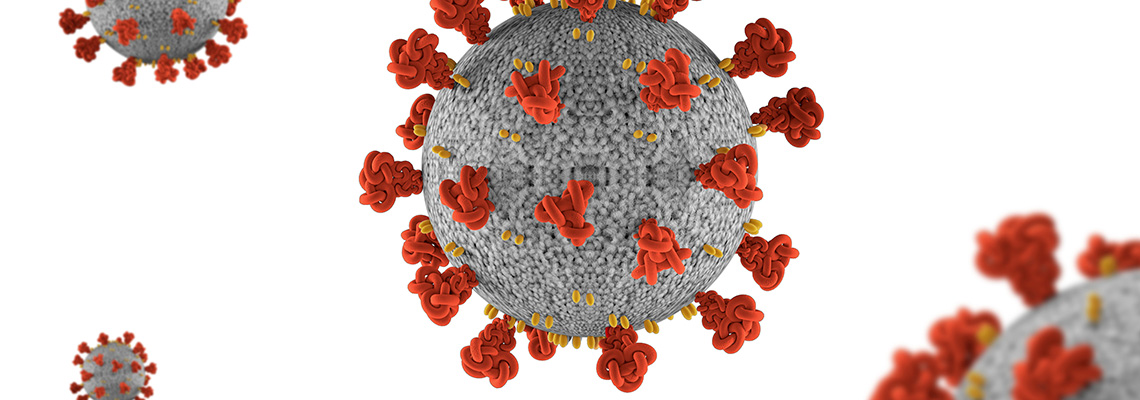

Latest research applications of T cell assays in SARS-CoV-2 infections, immunity investigations and patient monitoring
2020 11 12 Cell Moderbacher Antigen-Specific Adaptive Immunity to SARS-CoV-2 in Acute COVID-19 and Associations with Age and Disease Severity
- This study analyzed SARS-CoV-2-specific adaptive immune responses during acute COVID-19 identifies coordination between SARS-CoV-2-specific CD4 T cells and CD8 T cells to limit disease severity. Aged individuals often exhibit uncoordinated adaptive responses, potentially tied to scarcity of naive T cells, highlighting immunologic risk factors linked to disease severity.
“ [Our results are] consistent with our conclusion that weaker SARS-CoV-2-specific T cell responses are associated with worse disease,”
“We connected key relationships between SARS-CoV-2 antigen-specific T cell immunological features, COVID-19 disease severity, aging, and other features.”
2020 10 01 Cell Sekine Robust T Cell Immunity in Convalescent Individuals with Asymptomatic or Mild COVID-19
“The observation that many individuals with asymptomatic or mild COVID-19 had highly durable and functionally replete memory T cell responses, not uncommonly in the absence of detectable humoral responses, suggests that natural exposure or infection could prevent recurrent episodes of severe COVID-19.”
2020 10 23 Frontiers Payen De Carvalho A Longitudinal Study of Immune Cells in Severe COVID-19 Patients
- COVID-19 mortality has been shown to correlate to global T cell function as indirectly measured by T cell lymphopenia.
“[We] hypothesize that inefficient SARS-CoV-2–specific CD8 T cell responses could promote viral persistence and then virus induced inflammatory damage in severe COVID-19 patients.”
2020 10 09 Murugesan Interferon-gamma release assay for accurate detection of SARS-CoV-2 T cell response
- Whole blood IGRA accurately distinguished between convalescents and uninfected healthy blood donors with a predominantly CD4+ T cell response à a SARS-CoV-2 IGRA may serve as a useful diagnostic tool in managing the COVID-19 pandemic.
- Whole blood stimulation with a SARS-CoV-2 peptide pool can sensitively detect a cellular immune response to SARS-CoV-2 and accurately distinguish between convalescents and uninfected healthy blood donors.
These results suggest that a SARS-CoV-2 IGRA may prove useful in identifying individuals with cellular immunity and thus serve as a powerful diagnostic tool in managing the COVID-19 pandemic.
2020 12 03 BMC Blot The dysregulated innate immune response in severe COVID-19 pneumonia that could drive poorer outcome
- All COVID-19 patients (PCR+) were included within 48 h of admission, with a diagnosis of severe community acquired pneumonia
- QuantiFERON Monitor® was used for whole blood stimulation with analysis of INFg (QFM Elisa) and other cytokines (Luminex)
In this research study, COVID-19 patients displayed similar T cell exhaustion to non-COVID-19 patients (vs. control group). However, COVID-19 patients had longer ventilation and longer ICU stay. The research study suggests that QuantiFERON Monitor may:
1.Play a role in disease severity prediction (severity assessment)
2.Be an easy tool to analyze inflammatory / anti-inflammatory dysregulation (exploratory research)
3.Help to adjust therapy to counterbalance dysregulated immune response (patient management, therapeutic Guidance?)
2020 12 Int Jour Inf Dis Vassallo Patients with Covid-19 exhibit different immunological profiles according to their clinical presentation
- In complicated forms of COVID-19, plasma cytokines before clinical deterioration are predictive of death
- Differences in immunological response could explain the broad spectrum of clinical severity
The authors conclude that their findings could explain differences in the clinical presentation and allow rapid identification of patients at risk for complications.
2020 10 19 Nature Liu Cheng Reduced numbers of T cells and B cells correlates with persistent SARS‑CoV‑2 presence in non‑severe COVID‑19 patients
- Persistent SARS-CoV-2 presence in non-severe COVID-19 patients is associated with reduced numbers of adaptive immune cells.
- Monitoring lymphocyte subpopulations could be clinically meaningful in identifying fully recovered COVID-19 patients. This study is the first investigation to examine changes of lymphocyte subpopulations in non-severe COVID-19 patients with persistent viral presence.
- CD4+ T cells, CD8+ T cells, and B cells were markedly decreased in these patients.
“Our findings suggest that monitoring lymphocyte subpopulations could be clinical meaningful in discharge management for non-severe COVID-19 patients with persistent viral presence.”
2020 10 09 CMI Petrone Goletti A whole blood test to measure SARS-CoV-2-specific response in COVID-19 patients
- IFN-γ-response to spike and remainder-antigens megapools was significantly increased in 35 COVID-19 patients compared to 29 “NO COVID-19” individuals (medians spike-MP: 0.26 vs 0, p=0.0002; medians remainder-antigens-MP: 0.07 vs 0.02; p=0.02).
- Within COVID-19 group, 69% had positive IgG serology. IFN-γ levels in response to both spike- and remainder-antigens-MPs were increased in COVID-19 patients with a positive serology compared to those with a negative serology.
- Stratifying the COVID-19-patients based on disease severity, no significantly different IFN-γ levels were observed among patients with mild or moderate or severe/critical disease in response to both spike- (p=0.27) and remainder-antigens-MPs (p=0.72).
2020 09 11 JAMA Stephens COVID-19 and the Path to Immunity
- SARS-CoV-2 activates T cells in the first week of infection, and virus-specific memory CD4+ cells and CD8+ T cells reportedly peak within two weeks but remain detectable at lower levels for 100 or more days of observation.
- Individuals with mild or asymptomatic disease are reported to exhibit robust memory T cell responses months after COVID-19 infection.
- Overall, these data suggest T cells are another level of population-level immunity against COVID-19.
2020 09 28 Frontiers Im Sauer An Effective COVID-19 Vaccine Needs to Engage T Cells
In this review of COVID-19 vaccine development, the authors conclude:
- “(…) a vaccine must elicit CD4 and CD8 T cell immunity in addition to the production of neutralizing antibodies (nAB) by B cells.”
- “T cells are especially necessary to clear severe virus infections”
- “(…), a strong need remains for vaccines leveraging all T cell epitopes, and for large phase 3 trials to demonstrate durable efficacy in diverse human populations.”
2020 09 04 Nature Imm Peng Broad and strong memory CD4+ and CD8+ T cells induced by SARS-CoV-2 in UK convalescent individuals following COVID-19
- There were significant correlations between spike-specific antibody titers and both overall T cell responses and spike-specific T cell responses; RBD-specific antibody titers and both overall T cell responses and spike-specific T cell responses; and NP-specific antibody titers and both overall T cell responses and spike-specific T cell responses
- T cell responses were detected against epitopes distributed across a wide variety of virus proteins. Significantly higher-magnitude (P=0.002) and broader (P=0.002) overall T cell responses were observed in severe cases compared with mild cases.
- A greater proportion of the T cell responses to spike (P=0.0268) and M/NP (P=0.02) were contributed to by CD8+ T cells in those with mild disease compared with those with severe disease
- This study demonstrated strong and broad SARS-CoV-2-specific CD4+ and CD8+ T cell responses in the majority of humans who had recovered from COVID-19.
The authors conclude that the identification of non-spike dominant CD8+ T cell epitopes suggests the potential importance of including non-spike proteins such as NP, M and ORFs in future vaccine designs.
2020 09 29 Frontiers Poonia Immune correlates of COVID-19 Control
- Early induction of protective immune responses are likely to ameliorate clinical severity of the disease while inflammatory cytokine response is likely to contribute to disease pathogenesis and mortality.
- Severe cases typically have lower lymphocytes counts.
2020 09 04 Science Mathew Deep immune profiling of COVID-19 patients reveals distinct immunotypes with therapeutic implications
This study identified three immunotypes of COVID-19 and revealed different patterns of lymphocyte responses in hospitalized COVID-19 patients:
1.Immunotype 1 was associated with disease severity and showed robust activated CD4 T cells, a paucity of circulating follicular helper cells, activated CD8 “EMRAs,” hyperactivated or exhausted CD8 T cells, and PBs.
2.Immunotype 2 was characterized by less CD4 T cell activation, Tbet+ effector CD4 and CD8 T cells, and proliferating memory B cells and was not associated with disease severity.
3.Immunotype 3, which negatively correlated with disease severity and lacked obvious activated T and B cell responses was also identified.
The authors conclude that these three major patterns may each represent a different suboptimal response associated with hospitalization and disease. These findings may have implications for treatments focused on activating versus inhibiting the immune response.
2020 07 19 Jour Med Vir Zhang The dynamics of immune response inCOVID‐19 patients with different illness severity
- Counts of total T cells, CD4+ CD8+ T cells, T cells, B cells, and NK cell counts were significantly decreased with the increase of illness severity, and a further decrease of lymphocyte subsets was observed in the deceased cases, which further validates the important value of lymphocyte COVID-subsets for predicting the prognosis of COVID-19.
- The CD4/CD8 ratio in critical patients was higher than that of moderate and severe patients and gradually decreased to the normal level during the course of disease.
- T cells, CD4+T cells, CD8+Tcells, and CD4/CD8 ratio are helpful markers to indicate the severe illness of COVID-19.
2020 03 19 Nature Zheng Functional exhaustion of antiviral lymphocytes in COVID-19 patients
- The total number of NK and CD8+ T cells was decreased markedly in patients with SARS-CoV-2 infection.
2020 03 27 JCI Chen Clinical and immunological features of severe and moderate coronavirus disease 2019
- SARS-CoV-2 infection may affect primarily T lymphocytes, particularly CD4+ and CD8+ T cells, resulting in a decrease in numbers as well as IFN-γ production by CD4+ T cells.
- These potential immunological markers may be of importance because of their correlation with disease severity in COVID-19.
Let us help!
If you have any questions about our products, don’t hesitate to reach out!




